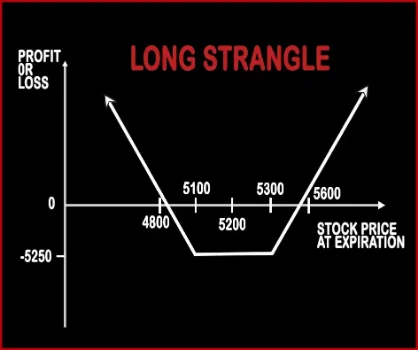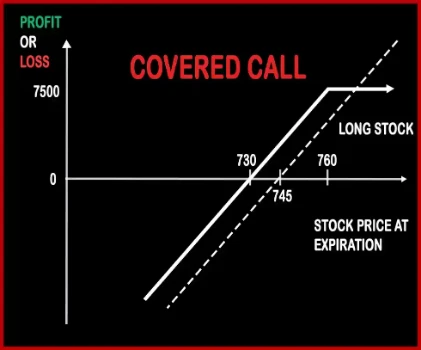Compare Strategies
| LONG STRANGLE | COVERED CALL | |
|---|---|---|

|

|
|
| About Strategy |
Long Strangle Option StrategyA Strangle is similar to Straddle. In Strangle, a trader will purchase one OTM Call Option and one OTM Put Option, of the same expiry date and the same underlying asset. This strategy will reduce the entry cost for trader and it is also cheaper than straddle. A trader will make profits, if the market moves sharply in either direction and gives extra-ordinary returns in the |
Covered Call Option StrategyMr. X owns Reliance Shares and expects the price to rise in the near future. Mr. X is entitled to receive dividends for the shares he hold in cash market. Covered Call Strategy involves selling of OTM Call Option of the same underlying asset. The OTM Call Option Strike Price will generally be the price, where Mr. X will look to get out o .. |
LONG STRANGLE Vs COVERED CALL - Details
| LONG STRANGLE | COVERED CALL | |
|---|---|---|
| Market View | Neutral | Bullish |
| Type (CE/PE) | CE (Call Option) + PE (Put Option) | CE (Call Option) |
| Number Of Positions | 2 | 2 |
| Strategy Level | Beginners | Advance |
| Reward Profile | Unlimited | Limited |
| Risk Profile | Limited | Unlimited |
| Breakeven Point | Lower Breakeven Point = Strike Price of Put - Net Premium, Upper Breakeven Point = Strike Price of Call + Net Premium | Purchase Price of Underlying- Premium Received |
LONG STRANGLE Vs COVERED CALL - When & How to use ?
| LONG STRANGLE | COVERED CALL | |
|---|---|---|
| Market View | Neutral | Bullish |
| When to use? | This strategy is used in special scenarios where you foresee a lot of volatility in the market due to election results, budget, policy change, annual result announcements etc. | An investor has a short term neutral view on the asset and for this reason holds the asset long and has a short position to generate income. |
| Action | Buy OTM Call Option, Buy OTM Put Option | (Buy Underlying) (Sell OTM Call Option) |
| Breakeven Point | Lower Breakeven Point = Strike Price of Put - Net Premium, Upper Breakeven Point = Strike Price of Call + Net Premium | Purchase Price of Underlying- Premium Received |
LONG STRANGLE Vs COVERED CALL - Risk & Reward
| LONG STRANGLE | COVERED CALL | |
|---|---|---|
| Maximum Profit Scenario | Profit = Price of Underlying - Strike Price of Long Call - Net Premium Paid | [Call Strike Price - Stock Price Paid] + Premium Received |
| Maximum Loss Scenario | Max Loss = Net Premium Paid | Purchase Price of Underlying - Price of Underlying) + Premium Received |
| Risk | Limited | Unlimited |
| Reward | Unlimited | Limited |
LONG STRANGLE Vs COVERED CALL - Strategy Pros & Cons
| LONG STRANGLE | COVERED CALL | |
|---|---|---|
| Similar Strategies | Long Straddle, Short Strangle | Bull Call Spread |
| Disadvantage | • Require significant price movement to book profit. • Traders can lose more money if the underlying asset stayed stagnant. | • Unlimited risk, limited reward. • Inability to earn interest on the proceed used to buy the underlying stock. |
| Advantages | • Able to book profit, no matter if the underlying asset goes in either direction. • Limited loss to the debit paid. • If the underlying asset continues to move in one direction then you can book Unlimited profit . | • Profit from option premium, rise in the underlying stock and dividends on the stock. • Allows you to generate income from your holding. • Profit when underlying stock price rise, move sideways or marginal fall. |